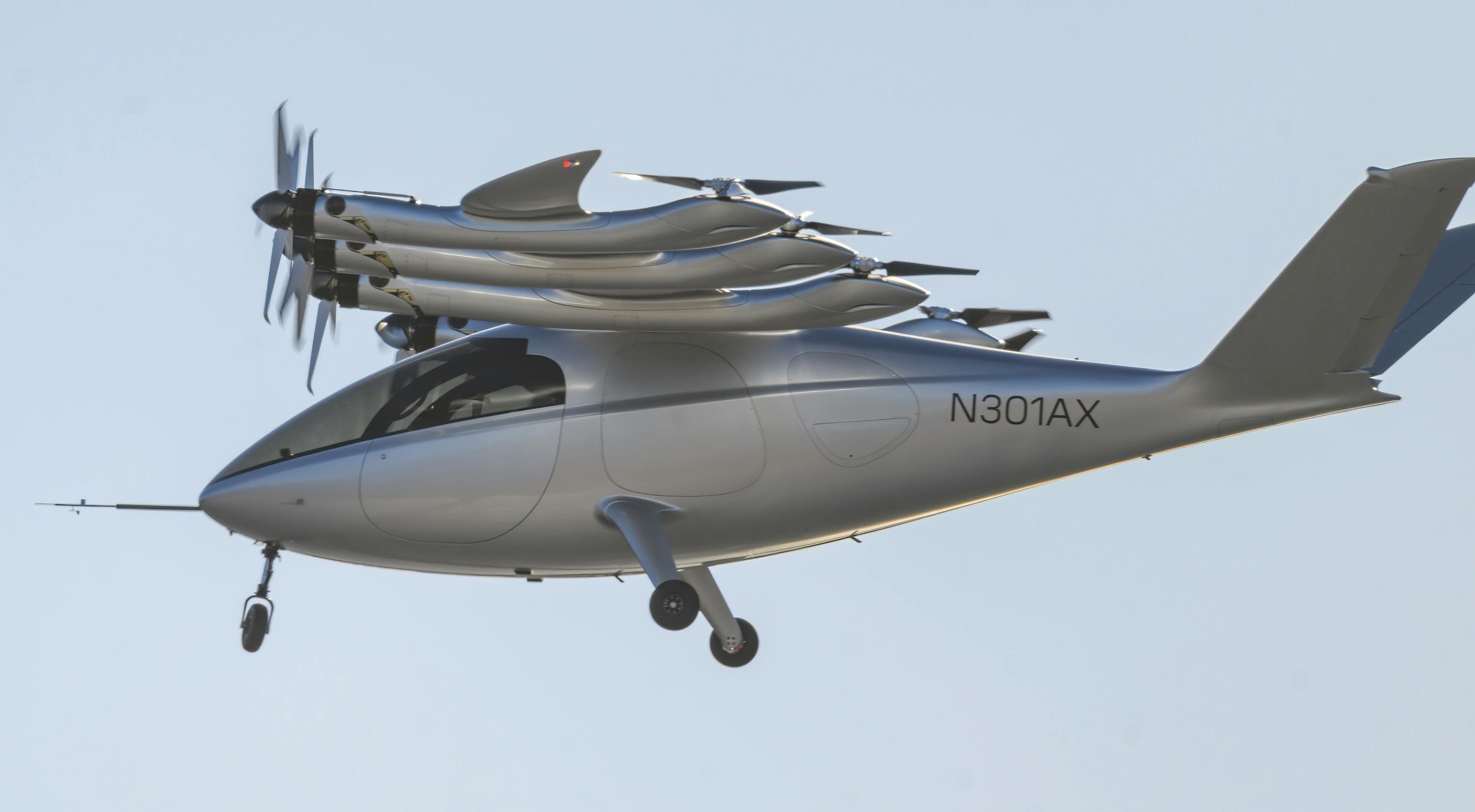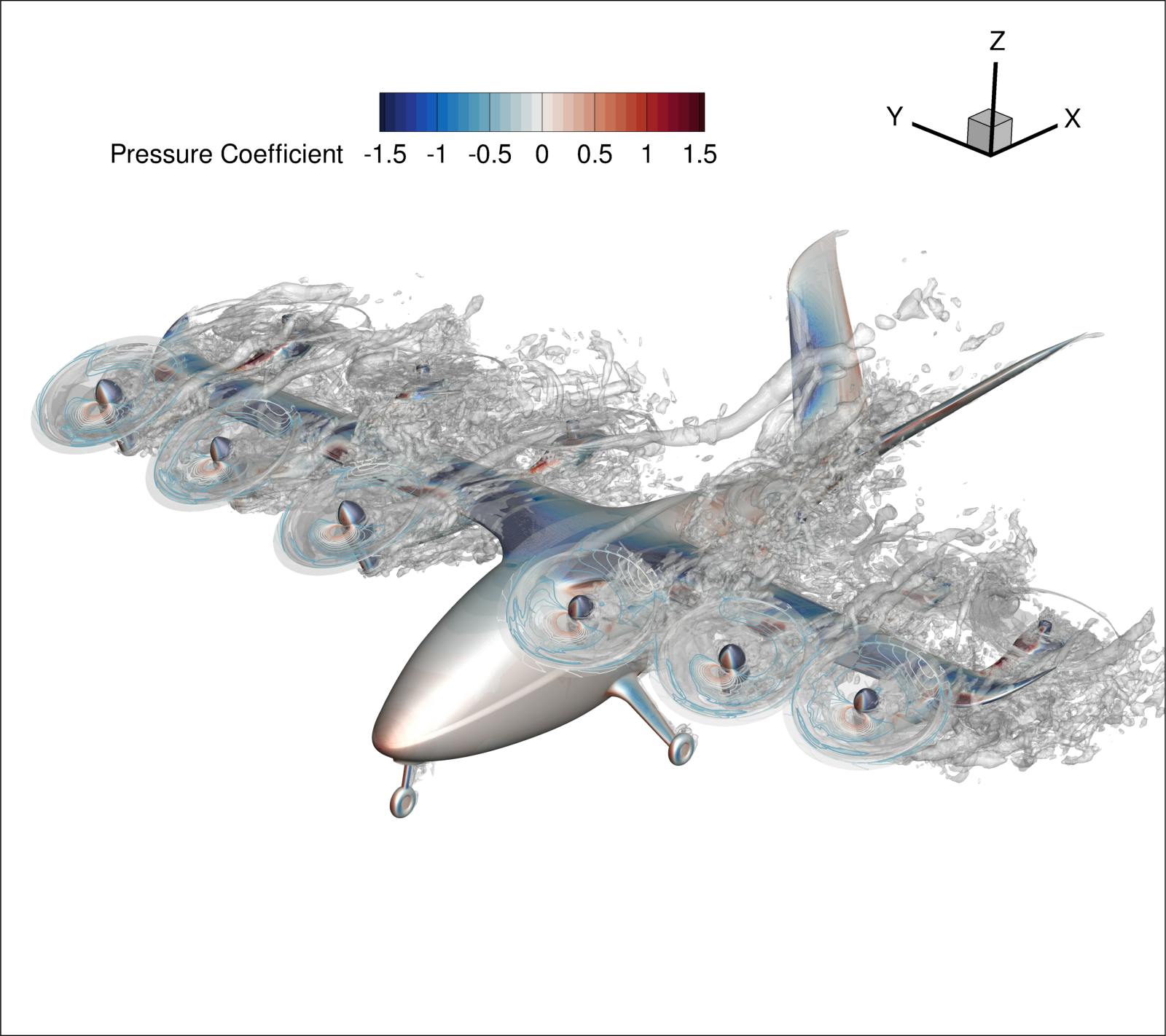
Written by: Dr. Geoff Bower, Archer Chief Engineer
On November 29, 2022, less than 12 months after first taking flight, Maker completed its first full transition flight. Maker has 12 propellers attached to six booms on a fixed wing. All 12 propellers provide vertical lift during take-off and landing. The forward 6 propellers tilt forward to cruise position to provide propulsion during forward flight, with the wing providing aerodynamic lift like a conventional airplane.
The aircraft took off vertically and climbed to an altitude of about 240 ft. It then accelerated to an airspeed of 91 kts (105 mph) while maintaining altitude, flew around a pattern, decelerated back to a hover, and completed a vertical landing. This was Maker’s first flight where the forward six propellers were held in cruise position. With the tilt propellers in their cruise position and lift propellers spooled down, Maker was fully wingborne at this speed and flying like a conventional airplane.
Transition is an important milestone for any vertical takeoff and landing aircraft, as it demonstrates in a single flight the capability to both takeoff and land vertically and cruise efficiently in wingborne flight. As you’ll see from some of the data below, the power required to fly Maker during wingborne flight is about three times smaller than during hover. Flying the majority of a trip in wingborne flight is critical to maximizing aircraft efficiency; in other words, carrying a payload at a high speed for a useful range.
The transition between hover and wingborne flight is traditionally also the most difficult to fly due to the rapidly changing aircraft configuration, hard to predict aerodynamic interaction effects (see Fig. 1), changing flight dynamics, and the associated control law changes.

Figure 1. OVERFLOW CFD simulation showing aerodynamic interactions between propellers and airframe during transition.
Thus far, throughout Maker’s flight test campaign we have followed a traditional envelope expansion approach. After clearing the hover envelope during our hover campaign, we incrementally increased the airspeed in 10 knot increments. At each airspeed the aircraft had to successfully complete a number of test points requiring multiple flights before moving onto the next airspeed. First, the aircraft accelerated to the new airspeed and flew steadily to qualitatively evaluate the aircraft stability and to confirm that the aircraft state and actuator trims matched our predictive models. Next, we performed system identification tests (frequency sweeps or chirps) in each control axis to quantitatively measure the control system stability margins and to extract information about the aircraft’s stability and control derivatives. When the flight test data verified our stability margins and corroborated our models we declared an airspeed cleared and expanded the envelope to the next airspeed.
The data we collect with Maker is invaluable to validate the tools and models we use to design, analyze, and certify our production aircraft, Midnight™. We thought we’d share some key learnings from this transition envelope expansion flight test campaign and highlight the advantages of our proprietary 12 tilt 6 configuration as it transitions to wingborne flight. Figure 2 below shows both model predictions and data from our flight tests showing how the power required varies with airspeed. There is excellent correlation between our flight test data and analysis tools. We also want to highlight, as we mentioned before, the roughly 3x reduction in power seen when comparing hover and cruise flight, which is critical to the aircraft design.

Figure 2. Power required as a function of airspeed from flight test data and aero model predictions.
Figure 3 shows the variation in the front engine tilt angle with airspeed. The airspeed at which the tilts reach the cruise position was deliberately designed to be around 90 kts to provide 30% margin above the power off stall speed of 70 kts (minimum airspeed for wingborne flight). Margin from stall speed is required to allow for maneuvering and gusts. This is similar to the typical approach speed of about 1.3 times the stall speed for a conventional airplane.

Figure 3. Forward engine tilt angle as a function of airspeed from flight test data and aero model predictions.
This is an exciting milestone on our path to commercialization, and though this is just a glimpse into the inner workings of our flight tests, there’s still much more ahead. Stay tuned.

